- Clone
- RMM-1 (See other available formats)
- Regulatory Status
- RUO
- Other Names
- Immunoglobulin M
- Isotype
- Rat IgG2a, κ
- Ave. Rating
- Submit a Review
- Product Citations
- publications
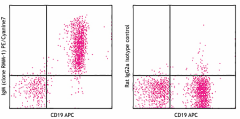
-

C57BL/6 splenocytes stained with CD19 (6D5) APC and IgM (clone RMM-1) PE/Cyanine7 (left) or rat IgG2a isotype control (right).
| Cat # | Size | Price | Save |
|---|---|---|---|
| 406513 | 25 µg | ¥19,580 | |
| 406514 | 100 µg | ¥50,380 |
IgM is the first immunoglobulin made by B cells in the immune response. Surface IgM is expressed on the majority of mature B cells.
Product DetailsProduct Details
- Verified Reactivity
- Mouse
- Antibody Type
- Monoclonal
- Host Species
- Rat
- Immunogen
- Mouse Ig cocktail
- Formulation
- Phosphate-buffered solution, pH 7.2, containing 0.09% sodium azide.
- Preparation
- The antibody was purified by affinity chromatography, and conjugated with PE/Cyanine7 under optimal conditions.
- Concentration
- 0.2 mg/ml
- Storage & Handling
- The antibody solution should be stored undiluted between 2°C and 8°C, and protected from prolonged exposure to light. Do not freeze.
- Application
-
FC - Quality tested
- Recommended Usage
-
Each lot of this antibody is quality control tested by immunofluorescent staining with flow cytometric analysis. For flow cytometric staining, the suggested use of this reagent is ≤1.0 µg per million cells in 100 µl volume. It is recommended that the reagent be titrated for optimal performance for each application.
- Excitation Laser
-
Blue Laser (488 nm)
Green Laser (532 nm)/Yellow-Green Laser (561 nm)
- Application Notes
-
The RMM-1 antibody reacts with both soluble and membrane immunoglobulin M in all tested mouse haplotypes (Igh-a and b). It does not react with other isotypes. Some formats of the RMM-1 antibody may be used as primary or secondary reagent for immunofluorescent staining or ELISA analysis.
-
Application References
(PubMed link indicates BioLegend citation) -
- Tertilt C, et al. 2009. Infect. Immun. 77:3044. (ELISA) PubMed
- Product Citations
-
- RRID
-
AB_10642031 (BioLegend Cat. No. 406513)
AB_10642031 (BioLegend Cat. No. 406514)
Antigen Details
- Structure
- Ig family
- Distribution
-
B cells
- Function
- B cell differentiation, humoral immune response; cross-linking surface IgM induces apoptosis
- Cell Type
- B cells
- Biology Area
- Immunology
- Gene ID
- 16019 View all products for this Gene ID
- UniProt
- View information about IgM on UniProt.org
Related FAQs
Other Formats
View All IgM Reagents Request Custom Conjugation| Description | Clone | Applications |
|---|---|---|
| Purified anti-mouse IgM | RMM-1 | FC,ELISA |
| PE anti-mouse IgM | RMM-1 | FC |
| Biotin anti-mouse IgM | RMM-1 | ELISA,FC |
| FITC anti-mouse IgM | RMM-1 | FC |
| APC anti-mouse IgM | RMM-1 | FC |
| PerCP/Cyanine5.5 anti-mouse IgM | RMM-1 | FC |
| APC/Cyanine7 anti-mouse IgM | RMM-1 | FC |
| Brilliant Violet 421™ anti-mouse IgM | RMM-1 | FC |
| PE/Cyanine7 anti-mouse IgM | RMM-1 | FC |
| Alexa Fluor® 488 anti-mouse IgM | RMM-1 | FC |
| Brilliant Violet 605™ anti-mouse IgM | RMM-1 | FC |
| Alexa Fluor® 647 anti-mouse IgM | RMM-1 | FC |
| Purified anti-mouse IgM (Maxpar® Ready) | RMM-1 | FC,CyTOF® |
| PE/Dazzle™ 594 anti-mouse IgM | RMM-1 | FC |
| Brilliant Violet 510™ anti-mouse IgM | RMM-1 | FC |
| TotalSeq™-A0450 anti-mouse IgM | RMM-1 | PG |
| Brilliant Violet 711™ anti-mouse IgM | RMM-1 | FC |
| APC/Fire™ 750 anti-mouse IgM | RMM-1 | FC |
| TotalSeq™-C0450 anti-mouse IgM | RMM-1 | PG |
| PE/Cyanine5 anti-mouse IgM | RMM-1 | FC |
| TotalSeq™-B0450 anti-mouse IgM | RMM-1 | PG |
| Spark Violet™ 423 anti-mouse IgM | RMM-1 | FC |
Customers Also Purchased
Compare Data Across All Formats
This data display is provided for general comparisons between formats.
Your actual data may vary due to variations in samples, target cells, instruments and their settings, staining conditions, and other factors.
If you need assistance with selecting the best format contact our expert technical support team.
-
Purified anti-mouse IgM
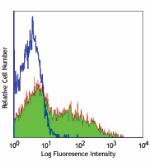
C57BL/6 Mouse splenocytes stained with purified RMM-1, follo... -
PE anti-mouse IgM
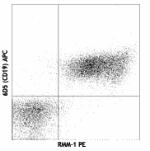
C57BL/6 splenocytes stained with RMM-1 PE and 6D5 (CD19) APC -
Biotin anti-mouse IgM
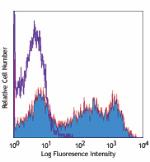
C57BL/6 Mouse splenocytes stained with biotinylated RMM-1, f... -
FITC anti-mouse IgM
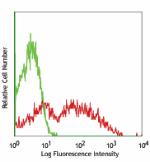
C57BL/6 splenocytes stained with RMM-1 FITC -
APC anti-mouse IgM
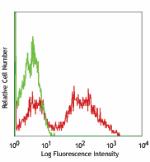
C57BL/6 splenocytes stained with RMM-1 APC -
PerCP/Cyanine5.5 anti-mouse IgM
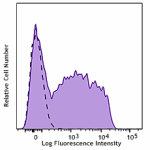
C57BL/6 splenocytes were stained with anti-mouse IgM (clone ... -
APC/Cyanine7 anti-mouse IgM

C57BL/6 splenocytes stained with CD19 (6D5) FITC and IgM (cl... -
Brilliant Violet 421™ anti-mouse IgM
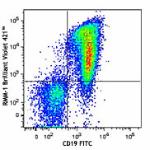
C57BL/6 splenocytes were stained with CD19 FITC and anti-IgM... 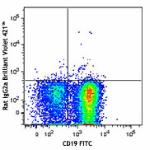
-
PE/Cyanine7 anti-mouse IgM

C57BL/6 splenocytes stained with CD19 (6D5) APC and IgM (clo... -
Alexa Fluor® 488 anti-mouse IgM

C57BL/6 splenocytes were stained with CD19 APC and anti-IgM ... 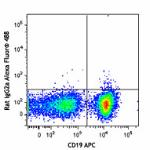
-
Brilliant Violet 605™ anti-mouse IgM
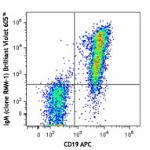
C57BL/6 mouse splenocytes were stained with CD19 APC and IgM... -
Alexa Fluor® 647 anti-mouse IgM
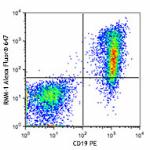
C57BL/6 splenocytes were stained with CD19 PE and anti-IgM (... -
Purified anti-mouse IgM (Maxpar® Ready)

C57BL/6 mouse splenocytes stained with 176Yb-anti-CD45R/B220... -
PE/Dazzle™ 594 anti-mouse IgM
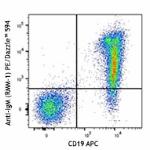
C57BL/6 splenocytes were stained with CD19 APC and anti-IgM ... 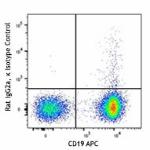
-
Brilliant Violet 510™ anti-mouse IgM
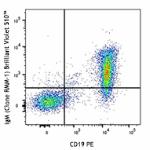
C57BL/6 splenocytes were stained with CD19 PE and anti-mouse... 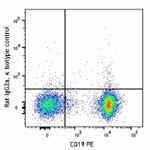
-
TotalSeq™-A0450 anti-mouse IgM
-
Brilliant Violet 711™ anti-mouse IgM

C57BL/6 splenocytes were stained with CD19 PE and anti-mouse... -
APC/Fire™ 750 anti-mouse IgM

C57BL/6 splenocytes were stained with CD19 PE and anti-mouse... -
TotalSeq™-C0450 anti-mouse IgM
-
PE/Cyanine5 anti-mouse IgM

C57BL/6 splenocytes were stained with CD19 Pacific Blue™ and... -
TotalSeq™-B0450 anti-mouse IgM
-
Spark Violet™ 423 anti-mouse IgM

C57BL/6 splenocytes were stained with anti-mouse CD19 PE and...










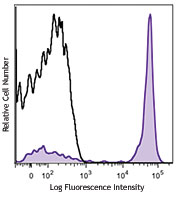
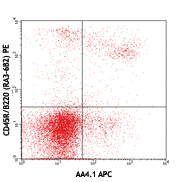
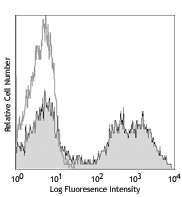
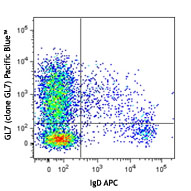



Follow Us